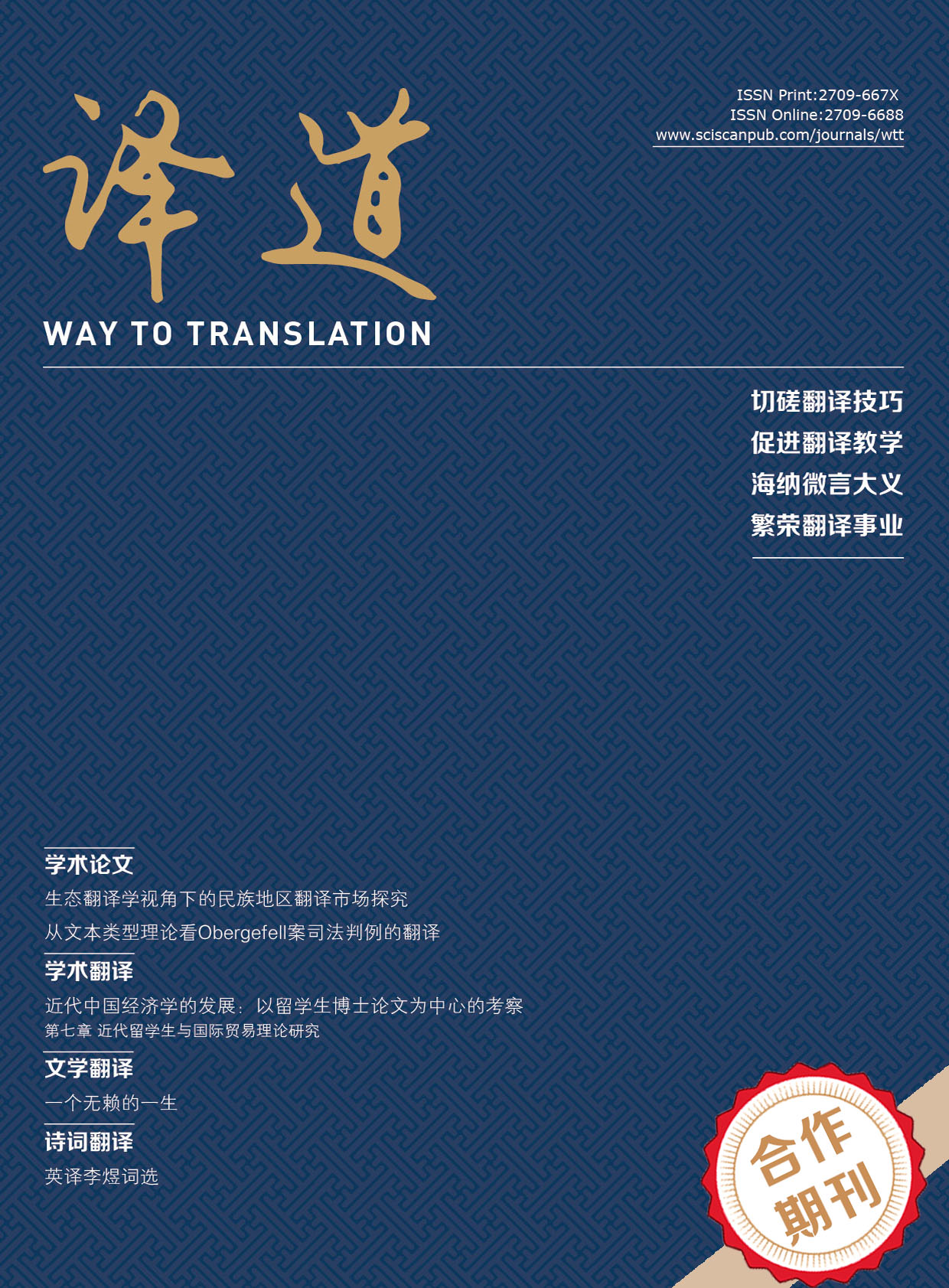Way to Translation
ISSN Print: 2709-667X
ISSN Online: 2709-6688
Contact Editorial Office
Subscribe to the latest published information from SCISCAN
《木兰辞》 在英语世界的翻译、改编与接受
Translation, Adaptation and Reception of The Ballad of Mulan in the Anglophone World
- Authors: 刘碧林
-
Information:
香港大学中文学院,香港
-
Keywords:
The Ballad of Mulan; Anglophone world; Translation; Adaptation; Reception《木兰辞》; 英语世界; 翻译; 改编; 接受
- Abstract: As the earliest written record of the story of Mulan replacing her father to join the army, the Ballad of Mulan has not only become widely known and passed down from generation to generation throughout China, but has also attracted the lovers of Chinese literature and culture in anglophone countries to introduced the poem to their culture through translation and adaptation. By the end of 2021, the Ballad of Mulan has had dozens of English reproductions, which, however, have barely been systematically explored. This article therefore first reviews the ballad’s existing English translations and adaptations, then analyses their characteristics and rewriting strategies, and finally looks at the reception of them within the anglophone community. It is found that the renderings, whose genres cover rhyme, free verse, and essay, are mainly presented in four forms, including articles in poem (essay) collections, chapters in monographs, articles in journals or academic journals, and texts in picture books, while the adaptations are mainly categorized into dramas (plays), novels and illustrated books. It is also found that the translations, albeit each distinctive from one another, are generally faithful to the original poem in terms of content, while the adaptations are more like a differentiated “afterlife” created by the adapters. Besides, in contrast to the translations, the adaptations are better accepted and have a wider audience. 作为最早记载木兰替父从军故事的文本,《木兰辞》不仅在中国家喻户晓、代代流传,更是吸引了英语国家的中国文学、文化爱好者的目光,纷纷将其以译文或改编作品的形式介绍到英语世界。截止2021年底,《木兰辞》已有数十种英语存在形式,但却鲜有学者系统探讨这首诗在英语国家的译介情况。因此,本文首先回顾现有《木兰辞》英译本与改编作品的出版情况,然后分析译本与改编的特点以及它们的改写策略,最后探查两者在英语世界的接受情况。研究发现,译本主要以诗(文)集文章、专著篇章、期刊或学报文章与绘本配文四种形式呈现,文体涵盖韵体诗、无韵诗和散文,改编则主要有剧目、小说和绘本三种;译本虽因译者不同而各具特点,但在内容上基本忠实于原作,而改编作品则更像是改编者在异域为原作塑造的差异化的“来世”;相较于译本,改编作品具有更高的接受度,拥有更广泛的受众群体。
- DOI: https://doi.org/10.35534/wtt.0204003
- Cite: 刘碧林.《木兰辞》在英语世界的翻译、改编与接受[J].译道,2022,2(4):13-22.
















